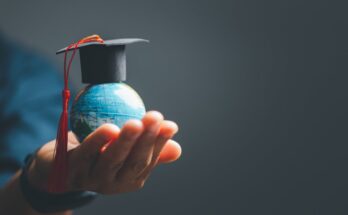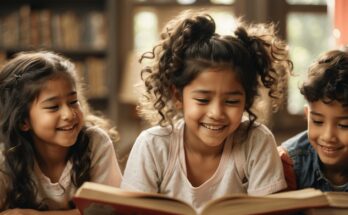Education is a dynamic and ever-changing industry, and in order for both students and instructors to genuinely flourish in the classroom, it is vital to embrace successful tactics that promote an environment that is favorable to learning. The purpose of this article is to examine five essential methods that contribute to the success of both students and teachers in the context of an educational environment.
- Cultivating a Growth Mindset
Cultivating a growth mindset in both teachers and students is one of the cornerstones of successful teaching practices. A growth mindset emphasizes the belief that talents and intelligence can be developed through commitment and effort. This entails helping kids face obstacles with grit and see setbacks as chances for growth and development. Teachers gain from cultivating a growth mindset as well since it promotes ongoing professional development.
Students should be praised for their effort and tenacity rather than their natural talents in order to foster a growth attitude. Participating in teacher professional development workshops provided by a reputable source can play an important role in creating a growth mindset among educators. These courses foster a mindset of continuous development in educators by giving them useful insights, resources, and tactics to improve their teaching techniques.
- Creating a Supportive Classroom Environment
Children’s overall growth needs to have a supportive classroom atmosphere. By encouraging positive connections and open communication, teachers play a crucial role in creating this culture. Teachers can establish a welcoming environment that meets each student’s requirements by recognizing and appreciating the variety of backgrounds and learning styles among their students.
A supportive environment is also facilitated by encouraging cooperation and teamwork among pupils. Student development of social and interpersonal skills is facilitated by group activities, conversations, and projects that promote peer-to-peer learning. Instructors can better meet the individual requirements of each student in the classroom, which provide them with insights into how to create inclusive and supportive classroom environments.
- Utilizing Technology Effectively
The use of technology in education has become essential in the twenty-first century. By using technology to improve education, both teachers and students can prosper. Technology gives students access to a wide range of materials, which supports their independent study and self-directed learning. On the other side, educators can use technology to vary their pedagogy and create more dynamic, interesting lessons.
Different learning styles can be accommodated by including educational apps, internet resources, and multimedia into the curriculum, which will keep students actively involved. Teachers can also use technology to monitor their students’ progress, give prompt feedback, and customize their lessons to meet each student’s needs.
- Implementing Differentiated Instruction
One of the main characteristics of good teaching is identifying and meeting the various learning needs of the pupils. In order to accommodate different learning styles and capacities within the same classroom, differentiated instruction must be implemented. This entails customizing instructional strategies, curriculum, and assessments. This system ensures that every student, regardless of aptitude or experience, has an opportunity to succeed.
By offering diverse resources, altering the degree of difficulty in assignments, and giving students several methods to demonstrate their understanding, teachers can differentiate their instruction. Every learner can advance at their speed due to this tailored learning approach. Differentiated instruction is a common topic covered in teacher professional development courses, which equips teachers to use these tactics successfully in the classroom.
- Fostering a Culture of Reflection
Teachers and students can both benefit greatly from using reflection as a technique to improve learning. Promoting metacognition in students by asking them to reflect on their learning processes helps them recognize their learning preferences and areas for development. Frequent introspection on lesson plans, classroom dynamics, and student performance is beneficial for teachers as well.
In the classroom, offering chances for reflective practices like journaling, debates, and self-evaluation helps foster a culture of ongoing development. Incorporating reflective methods into their teaching allows educators to improve their lesson plans, adjust to the changing requirements of their pupils, and be aware of how the educational environment is changing.
Conclusion
Both teachers and students must work together for the classroom to thrive. Five tactics that help individuals succeed in the classroom are developing a growth mindset, building a supportive environment, using technology well, introducing customized instruction, and encouraging a culture of reflection. Students and teachers can work together to create a dynamic and interesting learning environment in the classroom through ongoing learning, adaptability, and teamwork. Workshops are essential in providing educators with the abilities and information required to apply these tactics, promoting an excellent educational culture successfully.



